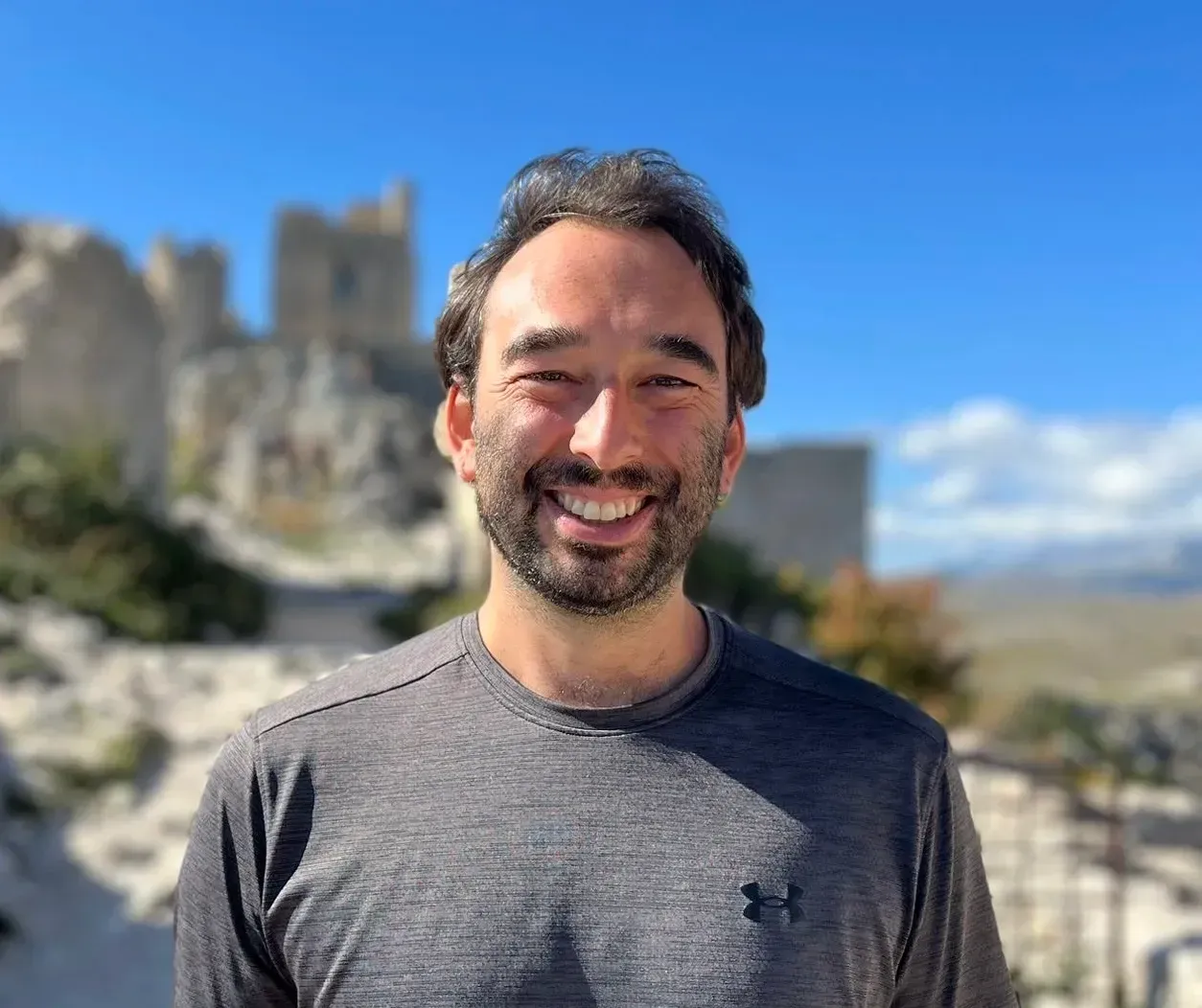
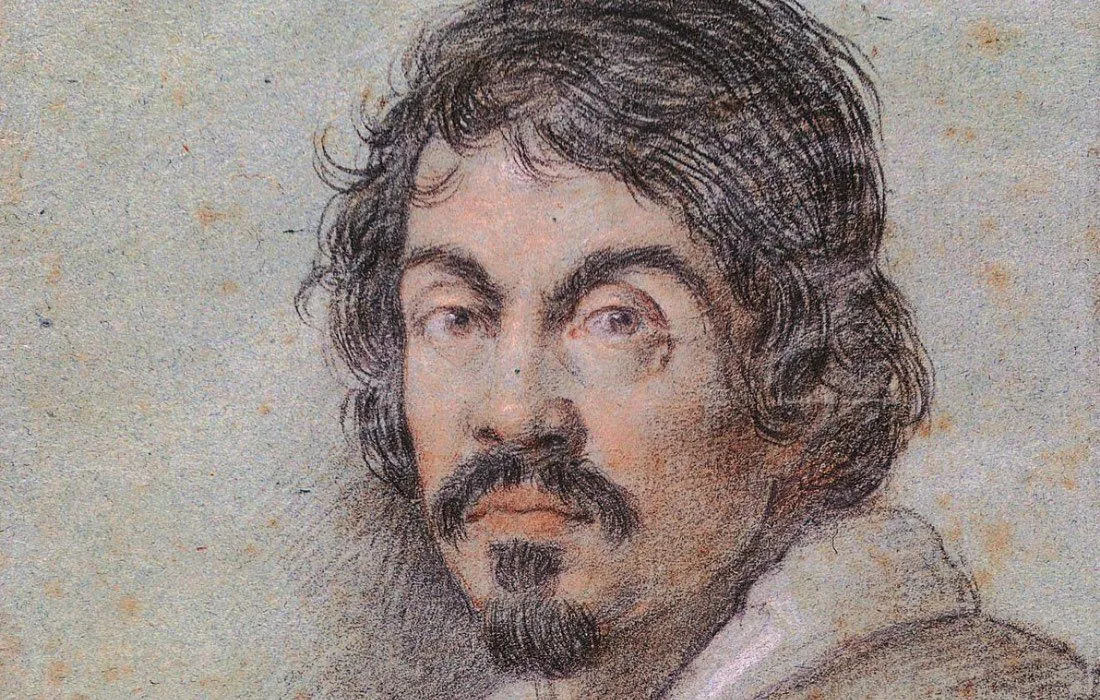

.webp)
The epithet ‘mad, bad and dangerous to know’ might be inscribed over the memory of Lord Byron, but it could just as easily have been applied to Michelangelo Merisi ‘Caravaggio’. Scandalous, shocking, and blessed by god are a handful of terms that surface when discussing the work of one of the greatest and most controversial painters to walk the streets of Rome.
Few Italian artists engender the kind of obsessive devotion that he's acquired since his brief career at the tail end of the Renaissance. Just as striking as his work is the story of his life: a short, tragic tale of passion and violence that to this very day remains half-shrouded in mystery. In his lifetime he rocked the world of the canvas, and centuries later his influence lives on in film and photography.
And yet we’re not even entirely sure where he’s buried.
The boy who would one day be known as Caravaggio was born in Lombardy in 1571, the son of a stonemason and a land surveyor’s daughter. Coming into the world on September 29th, the feast day of the Archangel Michael, he was given the name Michelangelo. When plague struck Milan four years later, his father whisked the family away to a small town to the east called Caravaggio. Years later, when his career in Rome began to flourish, it was this title that became the talk of the town. It seems some other guy named Michelangelo had already made a name for himself a hundred years before.
Upon arriving in Rome, Michelangelo Merisi da Caravaggio found brief employment producing still lifes in the studio of Giuseppe Cesare, the Cavaliere d’Arpino. At the time, still life was considered hack work, but it was then that he developed one of his most distinctive trademarks: the vivid way he depicted fruit and flowers, with the same irregularities and imperfections found in nature.
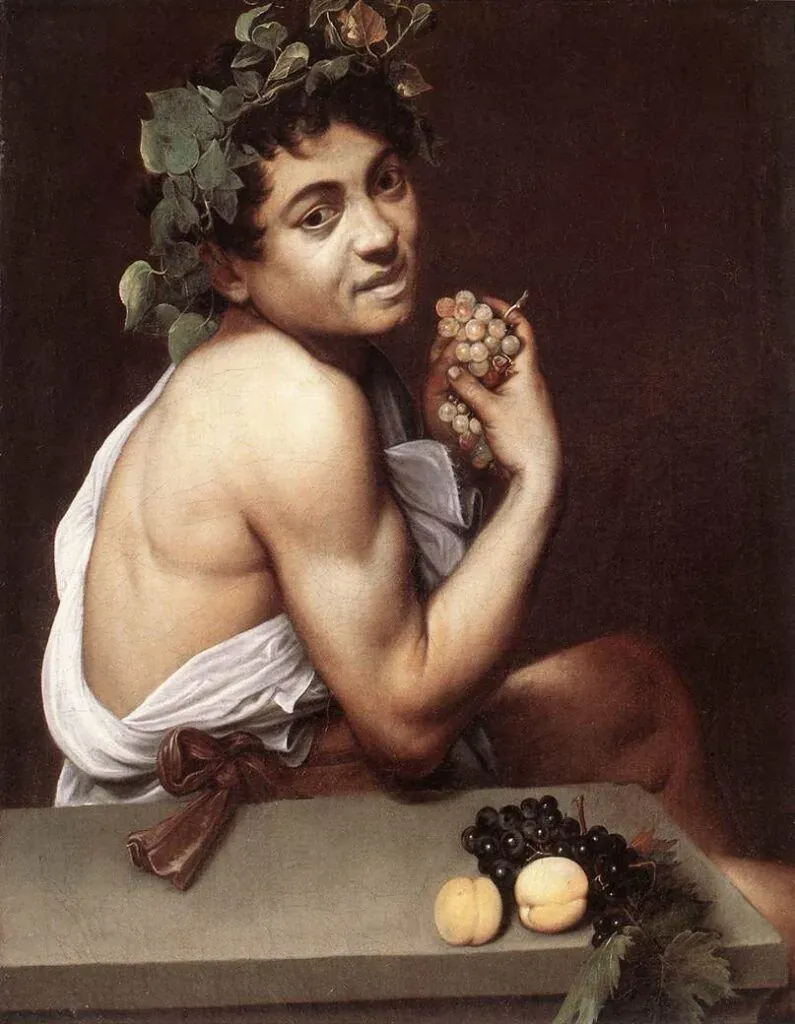
Caravaggio’s Self Portrait | Sick Bacchus
This element featured heavily in two of his earliest works, Self-Portrait as Bachus (aka Sick Bachus) and Boy with a Basket of Fruit. These paintings so enthralled the art collector Cardinal Scipione Borghese that he had his uncle Pope Paul V seize Cesare’s entire collection in 1607. They can still be seen hanging on the walls of the Galleria Borghese.
Caravaggio’s break onto the global stage came in 1599. The cardinal Mathieu Cointrel had purchased a chapel in San Luigi Dei Francesi, the French national church, just down the street from Piazza Navona. Before his death in 1585 he’d stipulated that the walls should be decorated with scenes from the life of his namesake, St. Matthew. Caravaggio landed the commission and embarked on his most daunting task to date: two monumental religious narrative paintings, twice the size of anything he’d done before, fit for public display. This job would make him or break him.
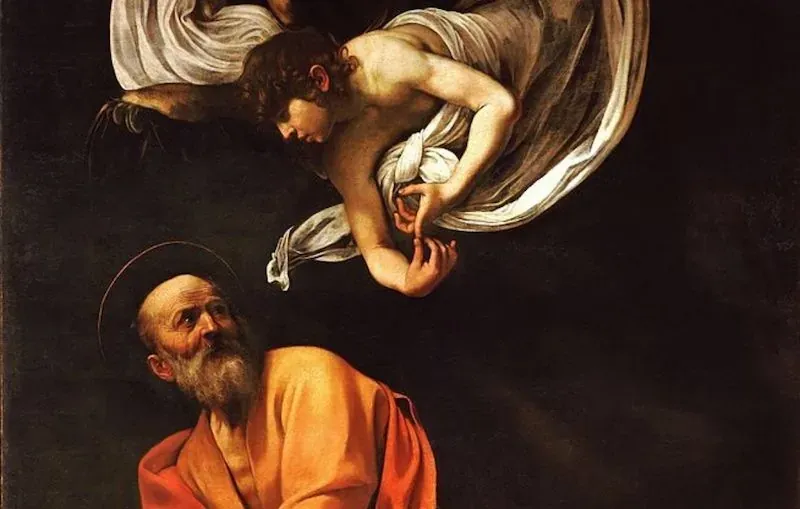
The Inspiration of St Matthew | San Luigi dei Francese
The Calling is one of his most iconic works. The scene is a seedy den of iniquity, not unlike the Roman hangouts that would have been more than familiar to the artist. A group of men, dressed in modern Italian finery, sit hunched over a table, obsessing over money. Christ has just walked in, St. Peter at his heels, bringing a piercing ray of light into a dark world of greed and avarice. With one hand he beckons Matthew to follow.
It’s been long held that Matthew is the flummoxed old man pointing to himself with a stupid look on his face. Yet a more recent reading suggests that Matthew is actually the young man at the far left, still obliviously counting out his change.
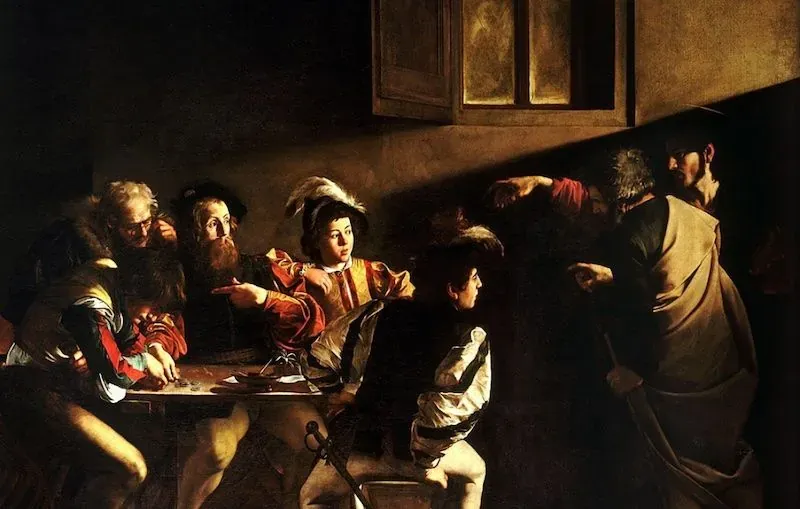
The Calling of St Matthew | San Luigi in Francese
This lighting technique, known as chiaroscuro (light-dark) became one of his calling cards. His work is defined by extreme contrast. Sin and salvation. Burgundy and white. The holy and the vulgar. Four hundred years later, Martin Scorsese would credit him as the inspiration behind the lighting in Goodfellas and Mean Streets.
The paintings were such a hit that Caravaggio was called back later to produce a third for the centre wall. It seems he knew already that he was taking his place in the pantheon of great Italian artists. Look closely at the hand of Christ. It’s almost a direct copy of the hand of Michelangelo’s Adam from the Sistine Chapel.
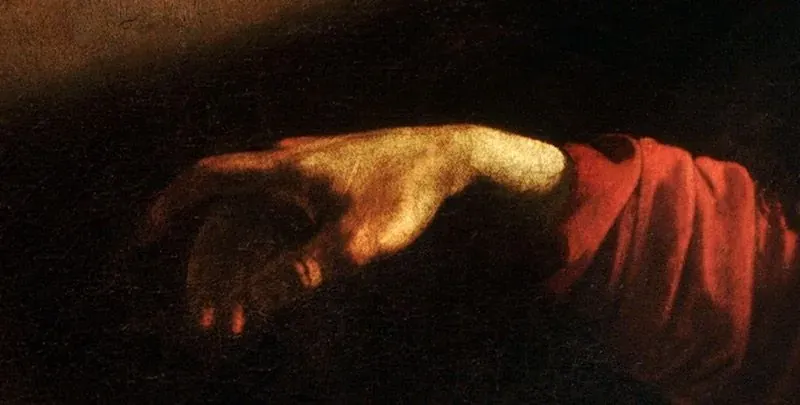
The Hand of St Matthew in Caravaggio’s Cycle
One of the most iconoclastic features of Caravaggio is the way he portrayed his subjects. At the time, the church’s policy was that saints should be depicted as nothing short of immaculate. Caravaggio’s saints on the other hand have weather-beaten skin, torn clothing, awkward expressions and dirty feet.
Shocking as this was by the standards of the day, he insisted that he was only interested in reality, that he wanted to depict these people as they actually would have looked. He gave the poor pilgrims who had made the hard trek to Rome characters who looked like them, and in essence, gave the saints back their humanity.
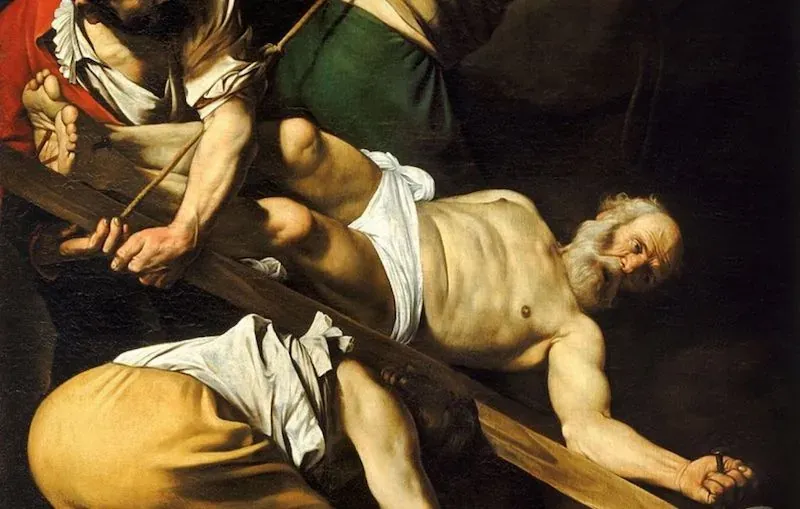
Crucifixion of St Peter by Caravaggio
Even more problematic was his choice of models. He was involved with a woman named Lena who modelled for the Blessed Mother in both The Madonna of Loreto and The Madonna of the Palafrenieri (rejected in part because Mary was showing just a bit too much cleavage.) In a testimony regarding one of the man’s numerous criminal charges, she is described as “Lena who stays on her feet in Piazza Navona.”
You can probably guess what she did for a living. For a time he was involved with another prostitute named Fillide Melandroni, who served as the model in Judith and Holofernes and St. Catherine of Alexandria. On top of this, he hand a long-standing affair with a boy named Cecco who modelled for a young John the Baptist, the boy with the fruitbasket, and numerous others.
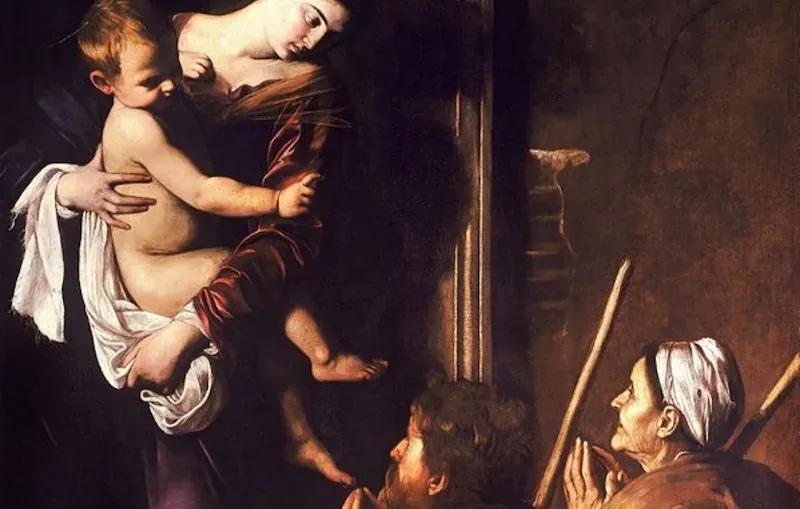
The Madonna of Loreto by Caravaggio
I could go on, but we’d be here all day.
The life of Caravaggio was fraught with violence straight out of a crime novel. He was arrested numerous times for brawling, rabble-rousing and carrying a sword without a permit. When his landlady sued him over back rent, he broke her windows in the middle of the night. Once when eating at a restaurant he punched a waiter in the nose over a remark about artichokes.
This all came to a head on May 28th, 1606, when he killed a man on a tennis court. The circumstances behind the incident remain obscure, but eyewitness testimonies give all the indications of a premeditated duel. Accident or no, he was a wanted man. He fled the city.
Naples. Malta. Sicily, followed by Naples again. He threw himself into his art, which became increasingly dramatic and moralistic, as if he was obsessed with his own salvation. Finally he received a message from Cardinal Borghese offering him the chance of a papal pardon. Knowing this was his last chance, he put together a gift box for the cardinal and set sail for Rome…but never arrived.
For centuries the death of Caravaggio remained a mystery. It was speculated that he’d been assassinated by the family of his victim, that he’d been murdered by the Knights of Malta, that he’d been killed by his enemies, malaria, syphilis—all plausible scenarios. However, in 2010, scientists performed carbon dating and DNA checks on a skeleton excavated in the Tuscan town of Porto Ercole. They confirmed they were fairly certain this was our man, and that he had levels of lead in his bones high enough to drive him mad before finishing him off.
The lead most likely came from his paints.
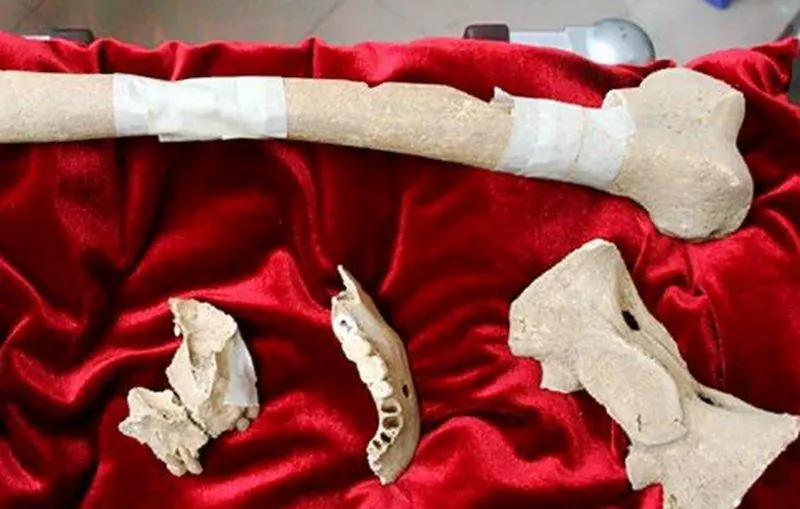
The supposed remains of Caravaggio
You can see plenty of Caravaggio’s work in Rome for free.
Use the interactive map below to locate where to see Caravaggio in Rome. If you click on the pins you'll find a description of the location and the paintings. Scroll past the map to see full hd images of all the paintings featured in this blog along with where to find them in Rome.

No headings found in content.
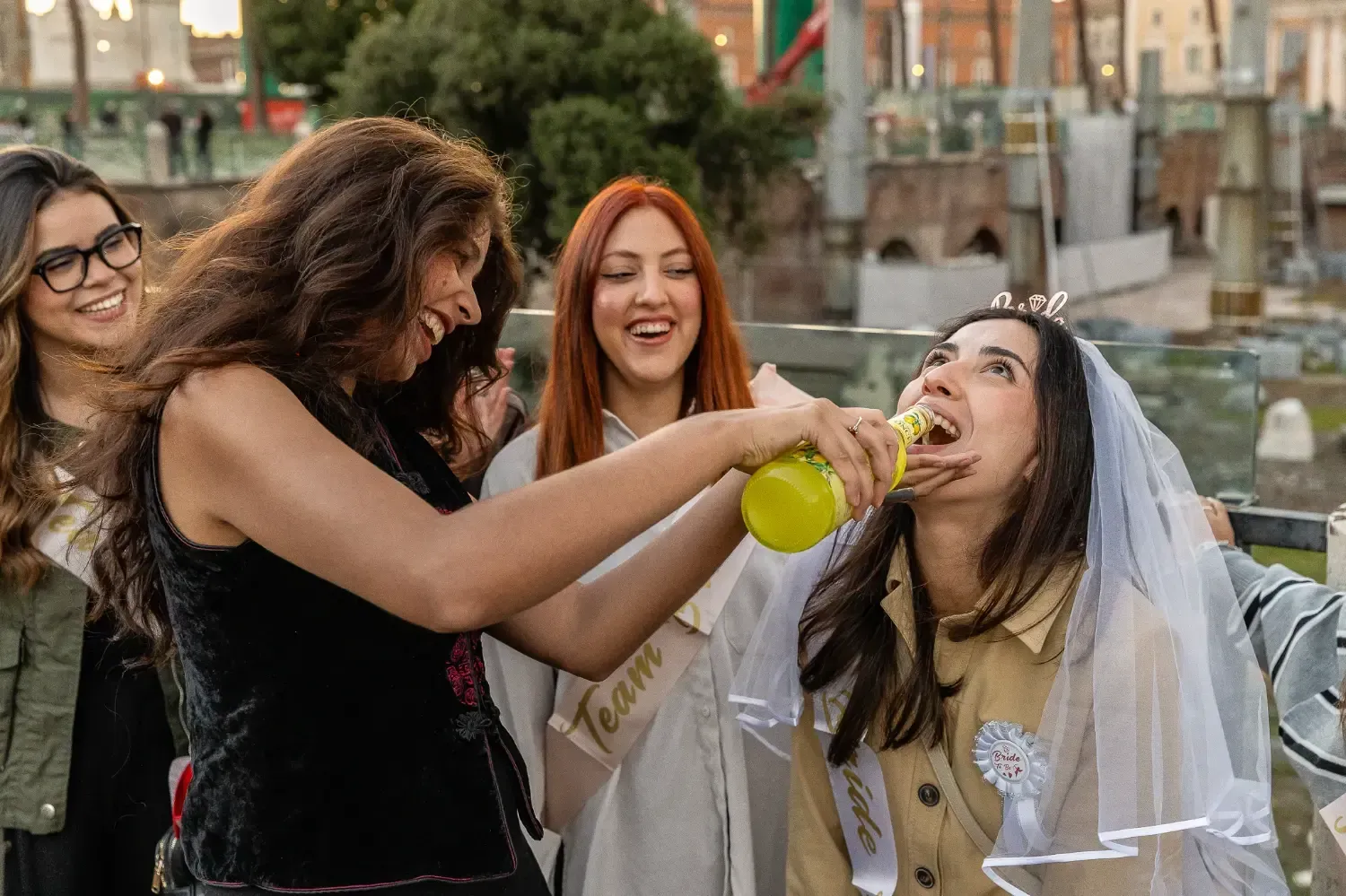
One of the best ways to meet people in a new city is to grab a drink together, and few city serve up more iconic drinks than Rome. Whether you’re travelling solo or with a group, for a long vacation or a short city break – our Rome Tipsy Tour is for you!
This unique nightlife experience combines all our favourite elements of travel: discovering new places, being immersed in different cultures, meeting fun people, and trying out a range of delicious drinks! It’s not a run-of-the-mill bar crawl. It’s a sociable tour that gives you a real taste of with Rome’s sights, stories, and signature drinks in a friendly, relaxed atmosphere with fun, local hosts. We also welcome sober travellers who want to join for a social experience but who want to forgo a hangover, so we’ll have non-alcoholic options available as well!
You’ll meet your guide and group at Piazza Madonna dei Monti, where we’ll break the ice with a warm Italian welcome – aka, a refreshing glass of local wine. After saying cheers—salute—we’ll head into Monti, an uber-trendy district filled with quirky bars and cobblestoned streets, and plenty to unpack. In ancient Rome, Monti was known as a suburra – the red-light district of Rome where prostitutes plied their trade and gangsters once roamed. As we wander through the cobblestone streets your guide will tell you scandalous stories of sex and bloodshed that you won’t hear on your typical walking tour.
After so much scandal, you’ll surely need a drink. So at our first stop on the Rome Tipsy Tour you’ll get an extra stiff one. The spotlight will be on Carpano Classico a venerable vermouth with a curious story! Unravel the history of the man who made it – Antonio Benedetto Carpano – back in 1786 whilst sharing some sips with your newfound friends.
We’ll keep the night going with some more saucy stories before trying a classic Italian Spritz. Indulge in the bitter flavours of Aperol or Campari Spritz while enjoying dolce far niente, the sweetness of doing nothing—apart from getting tipsy of course!
Our final stop is Rome’s most iconic road, the Via dei Fori Imperiali, leading down to the Colosseum. The views of the ancient city are best enjoyed after dark with an ice-cold Limoncello – trust us. Sip away as your guide tells shocking stories of the power-hungry Roman emperors who once ruled the known world.
At 11 p.m., the Tipsy Tour officially ends, but the night out begins! We will continue drinking with our new friends at some of Rome’s most popular bars!
Don’t miss out on this once-in-a-lifetime experience. We promise to make your night in Rome one you’ll never forget! Skip a boring walking tour, and come get tipsy with us.
Book your spot now!
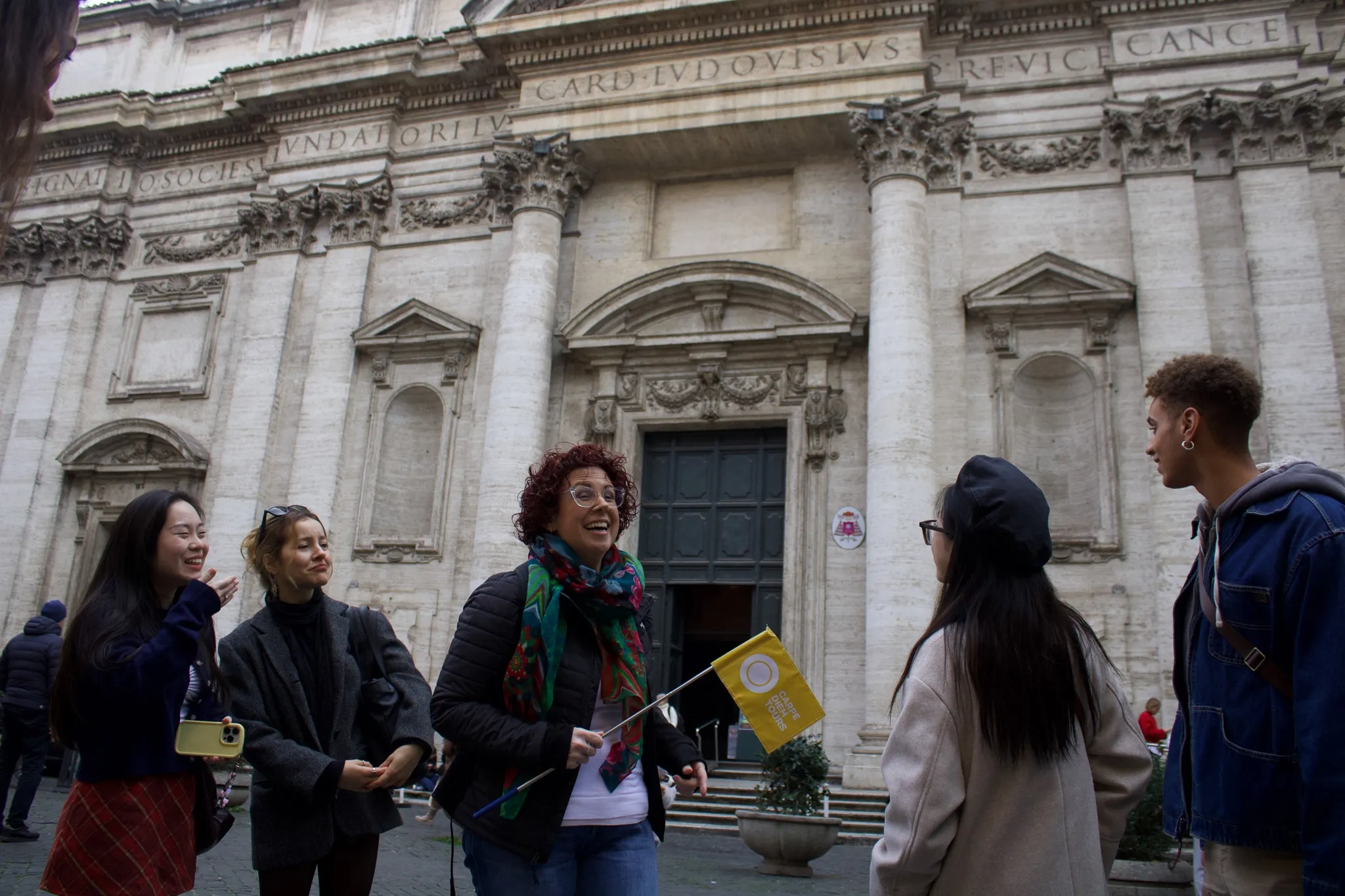
Explore the wonders of the Eternal City on our Wonders of Rome Walking Tour! As you get your bearings around Rome’s cobbled historic centre, your expert storyteller will bring Rome’s most must-see sites to life, including the Pantheon, Trevi Fountain, and Piazza Navona. Take photos, make memories, and most importantly, get the most out of your time in the Italian capital!
Your guide will share the city’s secrets and narrate its story in a way that will make you feel like you’ve stepped back in time – from explaining how the stunningly intricate churches and palaces were erected, to how the grand fountains were used to channel water throughout the city.
After meeting your guide at Piazza d'Aracoeli, we'll head to the Piazza Venezia, the crossroads between the ancient city and the modern capital and one of the most scenic squares in Italy! We'll then admire Trajan’s Column, a second-century AD monument which portrays the bloody victory of the emperor Trajan in his Dacian wars in Eastern Europe.
After taking a moment to marvel at the imposing Altar of the Fatherland, we’ll make our way to the iconic Trevi Fountain. Toss a coin into the fountain, spend a moment soaking in its sounds and scenery (metaphorically, not literally!), and uncover the fascinating stories behind the fountain’s statues and symbols.
We’ll then make our way to the Pantheon where the spectacle of the 2000-year-old dome will blow you away. Marvel at one of the best-preserved buildings of the ancient world, hear the story behind the man who built it, and discover the shocking architectural secret behind how the dome is (or isn’t) supported!
The square is situated near some of Rome’s best and most vibrant bars and restaurants and your guide will be happy to recommend where to go.
Our Rome Walking Tour is suitable for people of all ages and fitness levels. You can expect this memorable experience to last about two hours, which leaves you with more than enough time to explore the city beyond. Make sure you don’t miss out.
Secure your spot today!
.webp)
Join us on a journey through Roman history on our immersive Rome by Night Walking Tour. Your expert guide will share the city’s secrets, history, and fascinating tales—from antiquity through to the modern day, and at a pace to suit you.
Our tour starts in Rome’s most picturesque square, Piazza Navona, where the ancient Romans used to watch athletic contests (agones). Today’s piazza sits above the ancient stadium and boasts Gian Lorenzo Bernini‘s stunning Fountain of the Four Rivers as its centrepiece.
A five-minute walk from Piazza Navona takes us to the world-famous Pantheon. Constructed more than two-thousand years ago by the eccentric emperor Hadrian, the Pantheon was consecrated as a monument to all the pagan gods (pan theos, in Greek meaning all the gods). This second-century temple is one of the best-preserved monuments in the Roman Empire and its unreinforced concrete dome still perplexes architects.
Our next stop is the iconic Trevi Fountain. Immortalised by Anita Ekberg wading through its water in Federico Fellini’s iconic film La Dolce Vita, the Trevi Fountain one of the most romantic spots in the Eternal City. Snap your photos of the monument in the moonlight, listen to your guide decipher its symbols, and toss a coin over your shoulder to guarantee your return to Rome.
We emerge from Rome’s winding backstreets onto Piazza Venezia. Stretching from the foot of the Capitoline Hill, against the backdrop of the Altar of the Fatherland, Piazza Venezia is Rome’s most recognisable square, and a repository of history involving figures from Napoleon to Mussolini.
Your guide will lead you down the Via dei Fori Imperiali, the boulevard that cuts through ancient Rome, past Trajan’s Column and alongside the forums of Trajan, Augustus and Nerva. Your guide will feed your curiosity and nourish you with knowledge about ancient Rome and its empire as you make your way towards the most famous monument of all: the Colosseum.
The Colosseum is one of the most awe-inspiring attractions that has survived from antiquity. As a colossal feat of architecture and engineering, its form has been replicated throughout the ages, manifested in stadiums and sports venues around the world. But while its form is familiar to us, the spectacles it accommodated are entirely alien, and remind us of the violent nature of Roman culture.
Group sizes are 15 people maximum.
Book your spot now to avoid missing out!
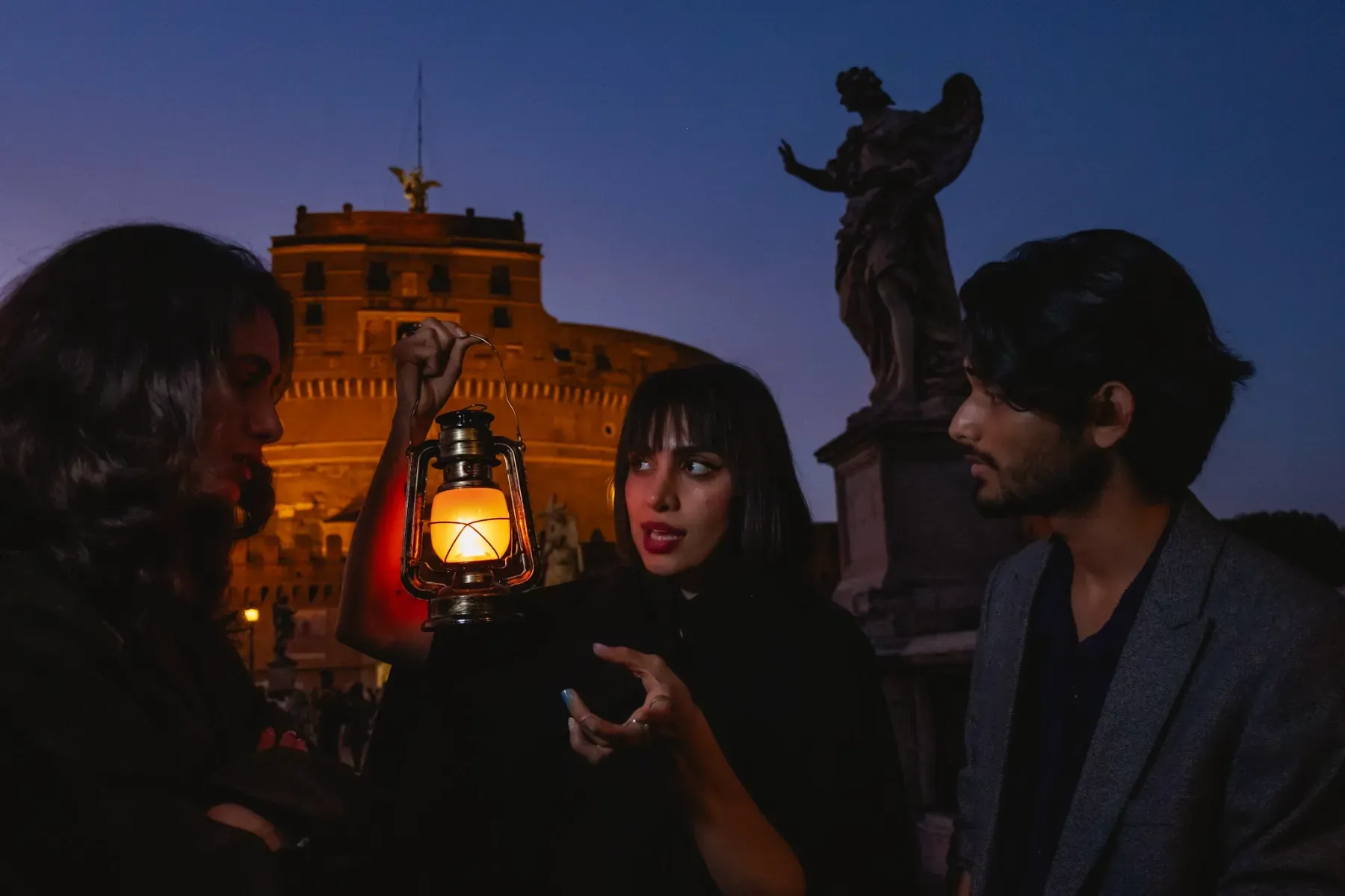
Rome may well be the world’s most beautiful city, but after dark a more sinister side emerges. The ghosts of popes, emperors, and artists lurk on every corner, their lives claimed by tragedy and conspiracy across more than 2,000 years of history. Our Rome Ghost Tour is not for the faint hearted — you’ll hear the ghastly tales of beheadings and murder that are sure to keep you up late at night.
Your Rome Ghost Tour starts at Campo de’ Fiori, a central square, where you’ll be treated to the tale of Giordano Bruno, one of Rome’s greatest minds who got on the wrong side of the church. After learning about his grisly end, you’ll begin to explore the city. Venture through medieval backstreets; visit an ancient church adorned with skulls; and step inside the home to a mysterious order of monks. Discover the childhood home of one of Rome’s most infamous executioners; see the site of one of Rome’s most infamous prisons; and pass by a poisonous perfumery where cosmetics killed.
Your tour ends at the imposing Castel Sant’Angelo, where your guide will reveal the horror of Rome’s most disturbing executions. If you’re (un)lucky, you might even encounter a ghost or two.
No matter what, you’ll never see Rome the same way again.
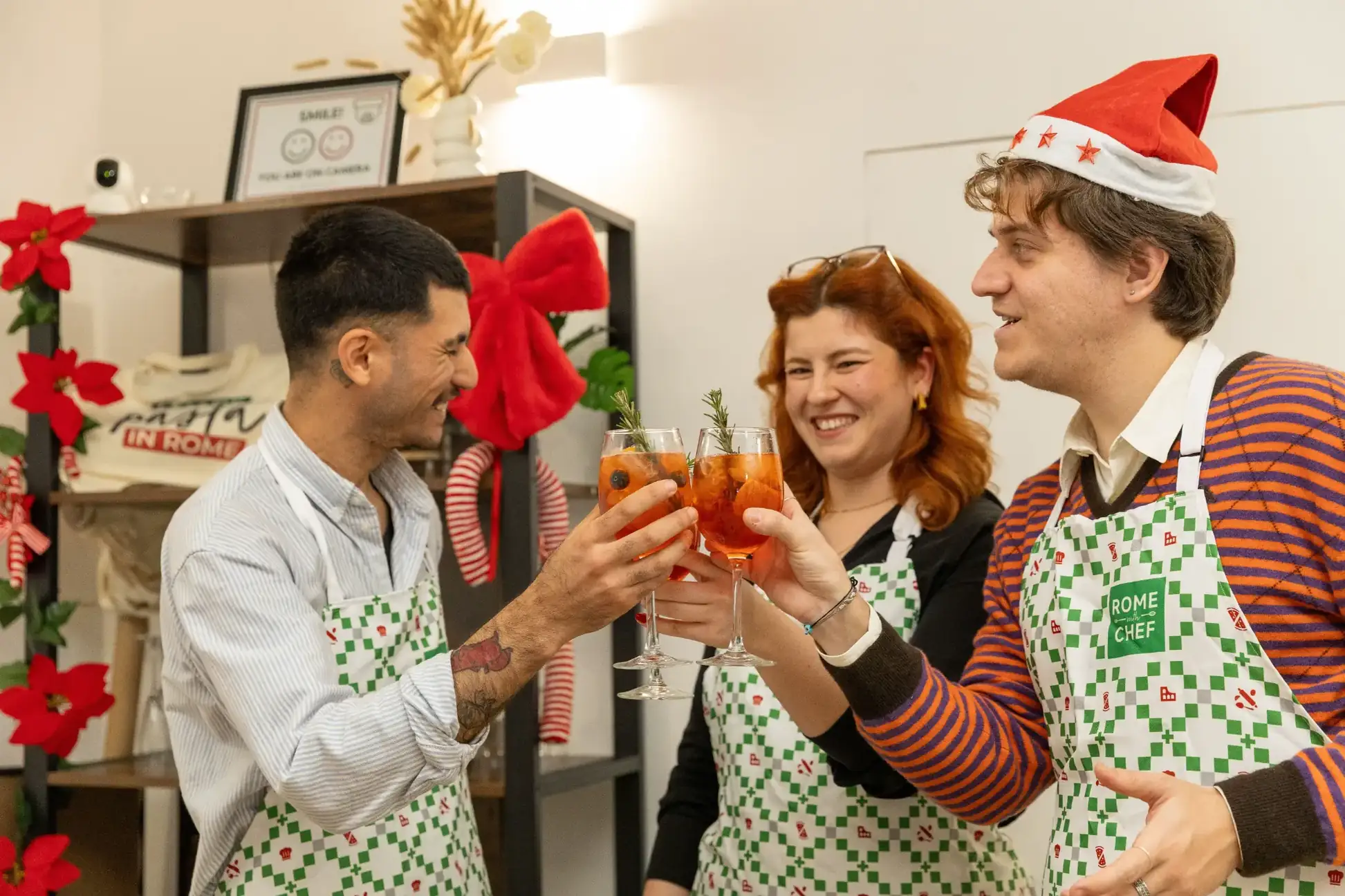
Twirl, sip, and soak up the seasonal cheer, because from December 1st to January 6th, we’re giving our usual class a holly-jolly glow-up. You’ll stir up a limited-edition cocktail packed with Yuletide spirit and finish with a classic Italian Christmas treat.
Did someone say Spritz? Discover the flavours of Rome on our Spritz and Spaghetti Class. Our centrally located kitchen is where you’ll learn everything you need to mix traditional Italian cocktails, and perfect the art of making fresh pasta. This is the only cooking class of its kind in Rome – a perfect blend of food, friends, and tipsy fun. So come join us and see what all the fuss is about!
Our team will welcome you and your small, intimate group with a mixology demo making Italy’s best-loved drink: Aperol Spritz. You’ll then get started on your hands-on pasta-making lesson led by a fun-loving, fluent professional chef before making a Hugo Spritz.
Your professional chef will guide you every step of the way – from kneading the dough to cutting the pasta. You’ll also be making a creamy carbonara sauce to coat your fresh pasta (vegetarians can try out another Roman classic of cacio e pepe). Travelling is all about meeting new people. At the end of this cooking class, you’ll dine on what you’ve made with a glass of Limoncello Spritz to wash it all down.
Book now and start making memories.
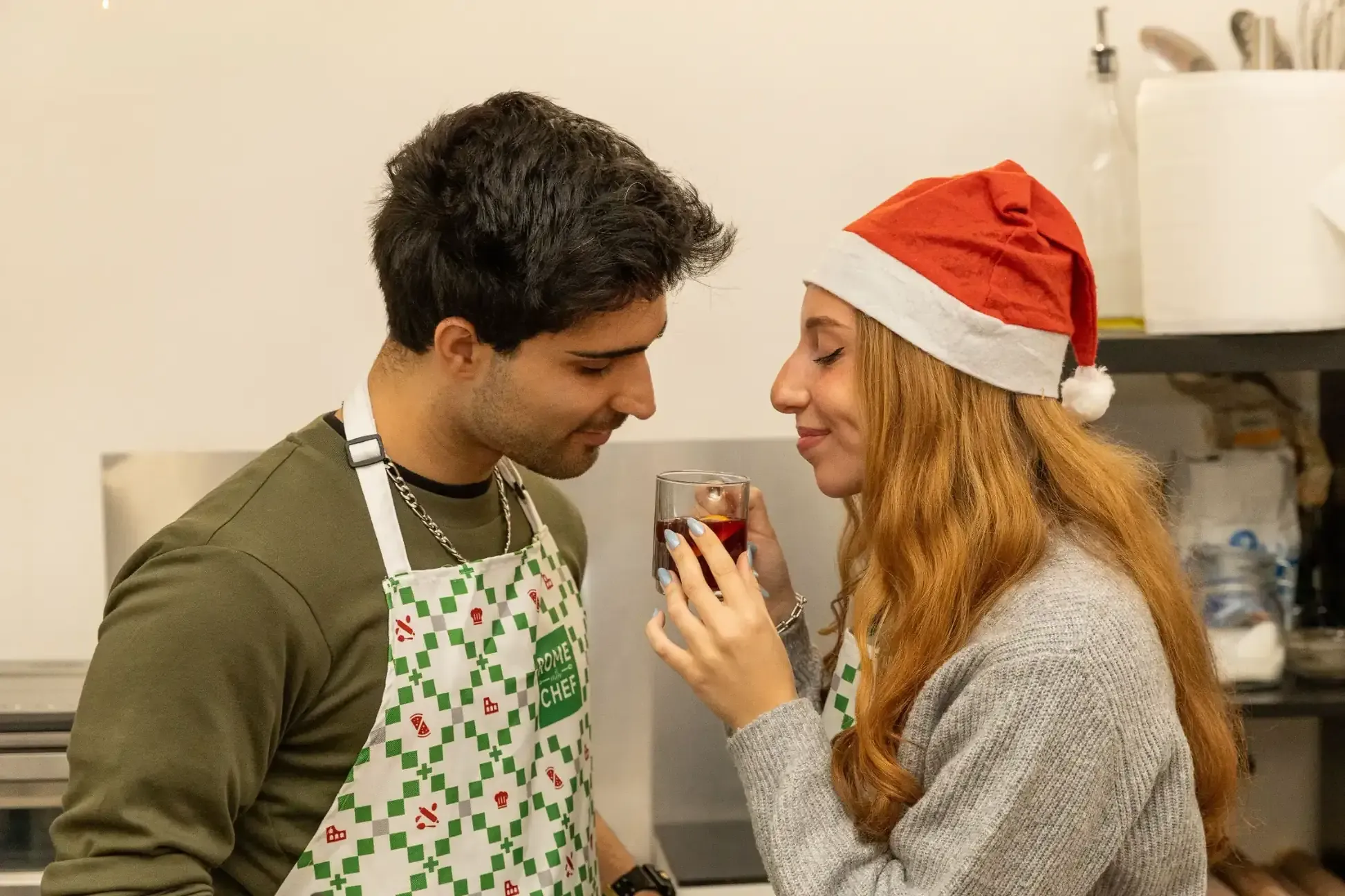
We’re spinning up festive flavours, Italian-style! From December 1st until January 6th, our pasta and tiramisu class gets a holiday twist, complete with mulled wine magic and made-from-scratch fun.
Learn to cook like an Italian in this small group pasta & tiramisù cooking class that gives you mastery over the country’s best-loved classics. Over the course of three fun-filled hours, you’ll enjoy the expert guidance of our fluent professional chef and get hands on recreating real Roman recipes, culminating in a well-deserved dinner and dessert.
Situated in our centrally situated air-conditioned cooking school, your interactive class will give you the true sense of an Italian nonna’s loving kitchen. Led by an enthusiastic and knowledgeable English-speaking chef, our cooking masterclass is perfect for kids and adults, beginners and experts.
Savoiardi (ladyfingers) are gently dipped in rich coffee before being layered with dollops of delicately mixed eggs and panna (cream). Finished off with a sprinkle of cocoa, these delicious desserts are set aside to rest in time for an after-dinner energy boost. In fact, the espresso within a tiramisù is what gives it a name that translates literally as “pick me up”!
Rolling up our sleeves, here is where we channel our inner nonna. Mixing, kneading, rolling, and shaping our fresh pasta from scratch will work up a sweat but result in elegant end products. We will then combine these carefully crafted creations with the flavours of the season and locality; be it twangy cacio e pepe or creamy carbonara.
How else to conclude your cooking class than by fully indulging in your culinary creations! Celebrate your accomplishment with family-friendly company, a gorgeous setting, and a glass of local wine or prosecco.
Whether returning a culinary maestro or a self-proclaimed novice, you’ll be sure to take the memories home with you and ruling your dinner parties back home!
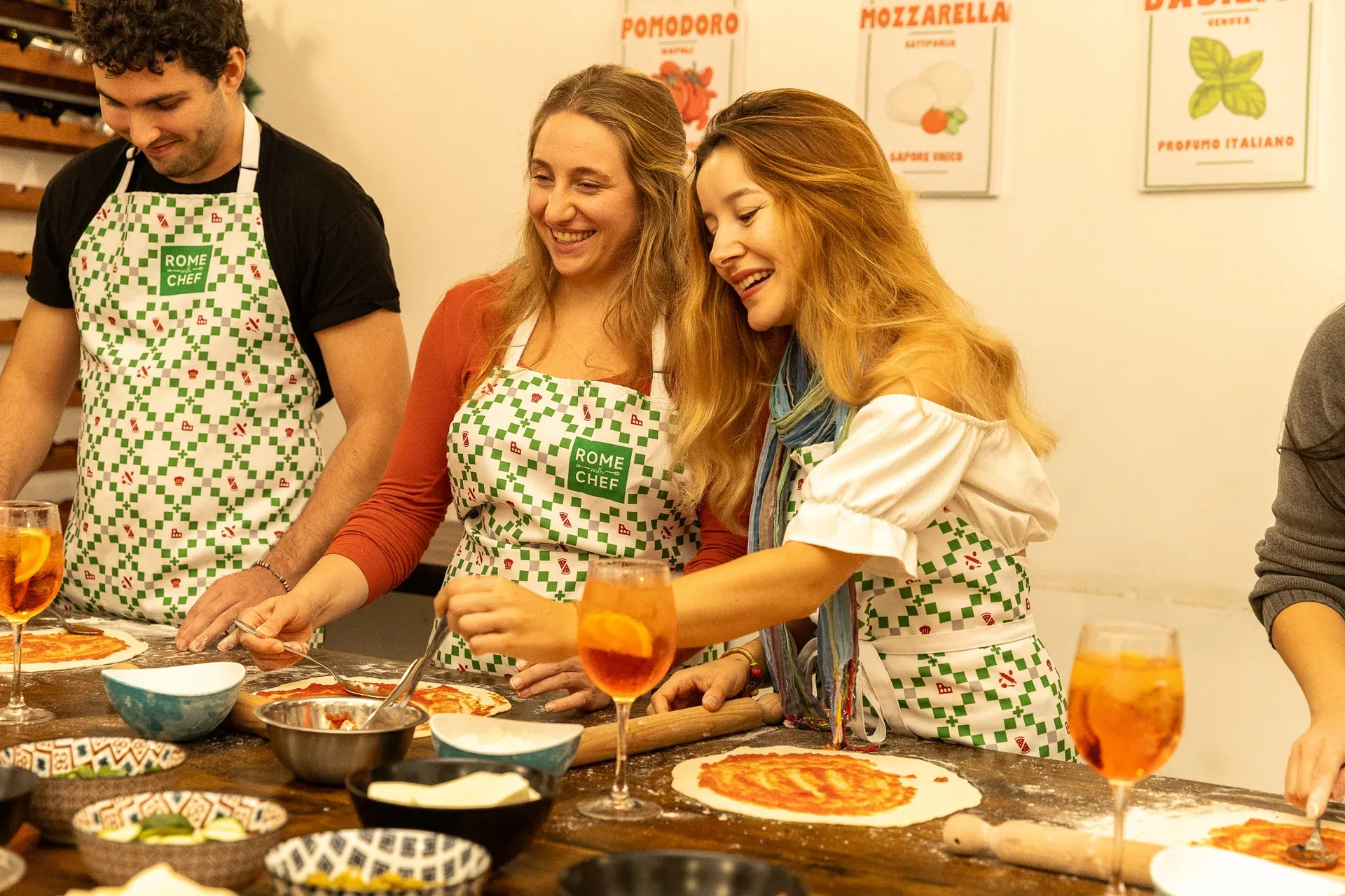
From December 1st until January 6th, our pizza class gets a merry makeover: mix your own seasonal spritz and indulge in a classic Italian Christmas dessert.
This isn’t your average elementary school pizza party; this is Rome, and we’re turning up the heat! Just ten minutes from the Colosseum, our high-energy cooking class is where pizzas fly and glasses are raised high.
In this dough-lightful evening experience, you’ll toss, top, and toast your way through a night of pizza-making, drink-sipping, and full-on Roman revelry. Ready to make your very own pizza? You’ll get a slice of pizza history from Rome and beyond, and a charismatic local chef will show you how to work the dough like a pro.
Roll, knead, and spread the dough before topping it off with everything your heart desires, except pineapple of course, we've got to stick to the rules. Then, as the dough rises, so does the mood because you'll get a crash course in Italian mixology. Sip on traditional Italian cocktails like Aperol and Hugo Spritz and socialise with your fellow chefs while your pizza bakes to Roman perfection.
Then, when everything is ready, it’s time to eat! You’ll dine like the Italians over a homemade pizza while continuing to sip on a Limoncello Spritz until your heart's content. You know the saying, when life gives you lemons, we turn it into a toast.
Whether you’re coming with friends, your amore, or are ready to make new pizza-loving pals, this isn’t just dinner, it’s a hands-on, wine-filled, flour-dusted party you’ll never forget.
So come hungry, bring your appetite for fun, and let’s raise a glass (and a pizza peel) to the tastiest night of your Roman holiday!
